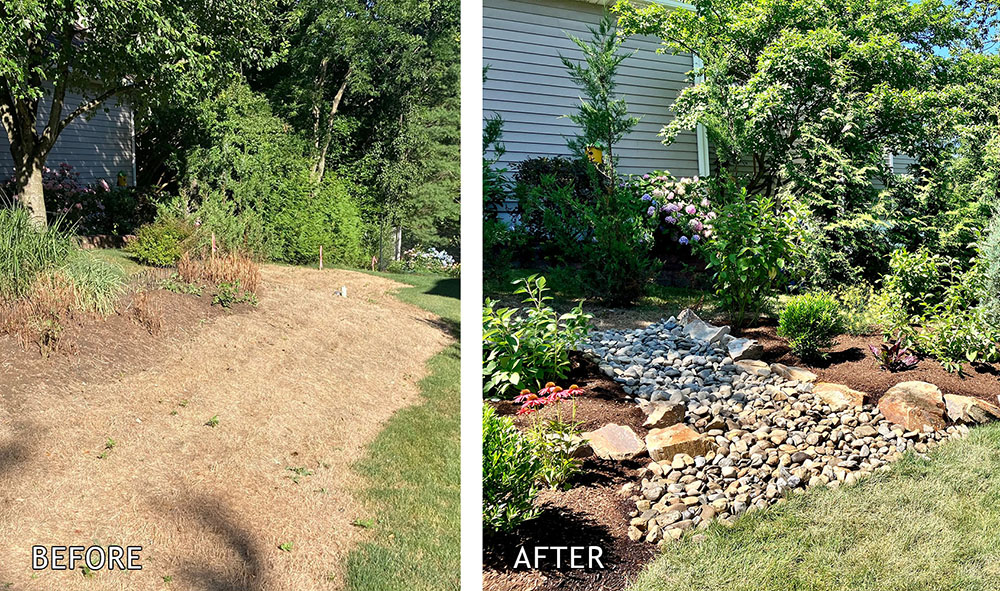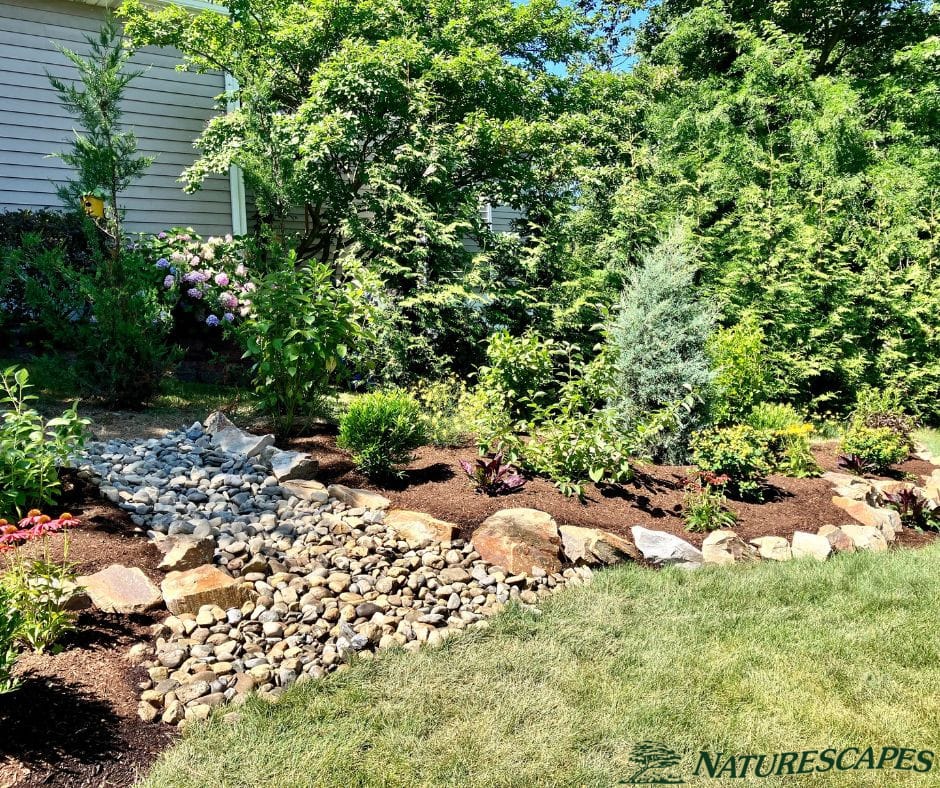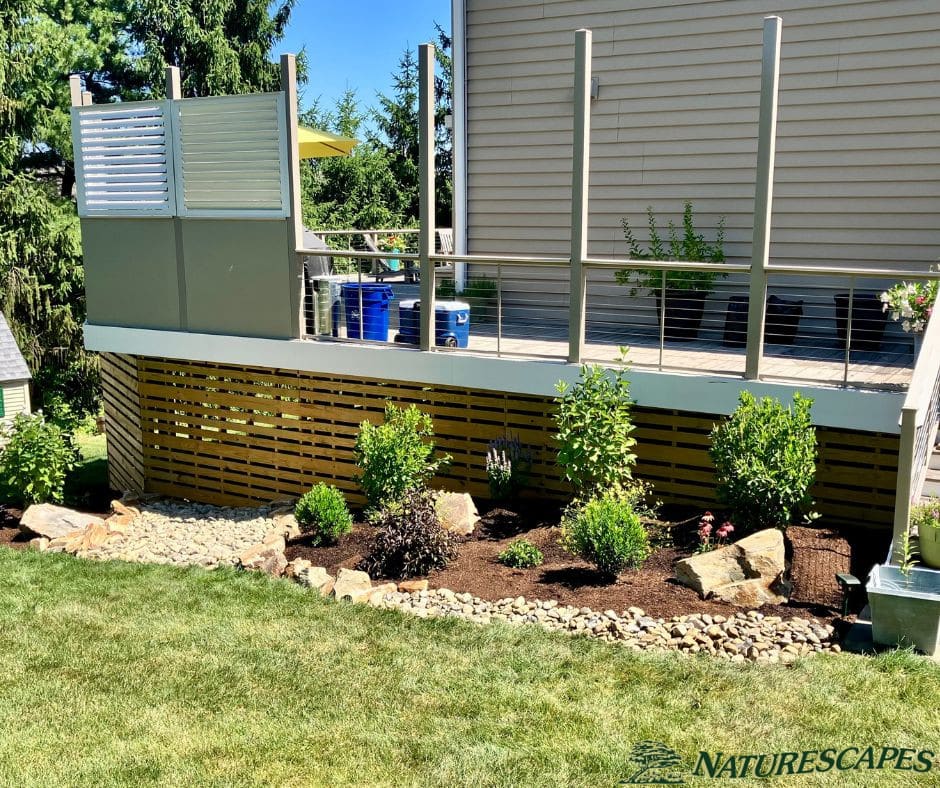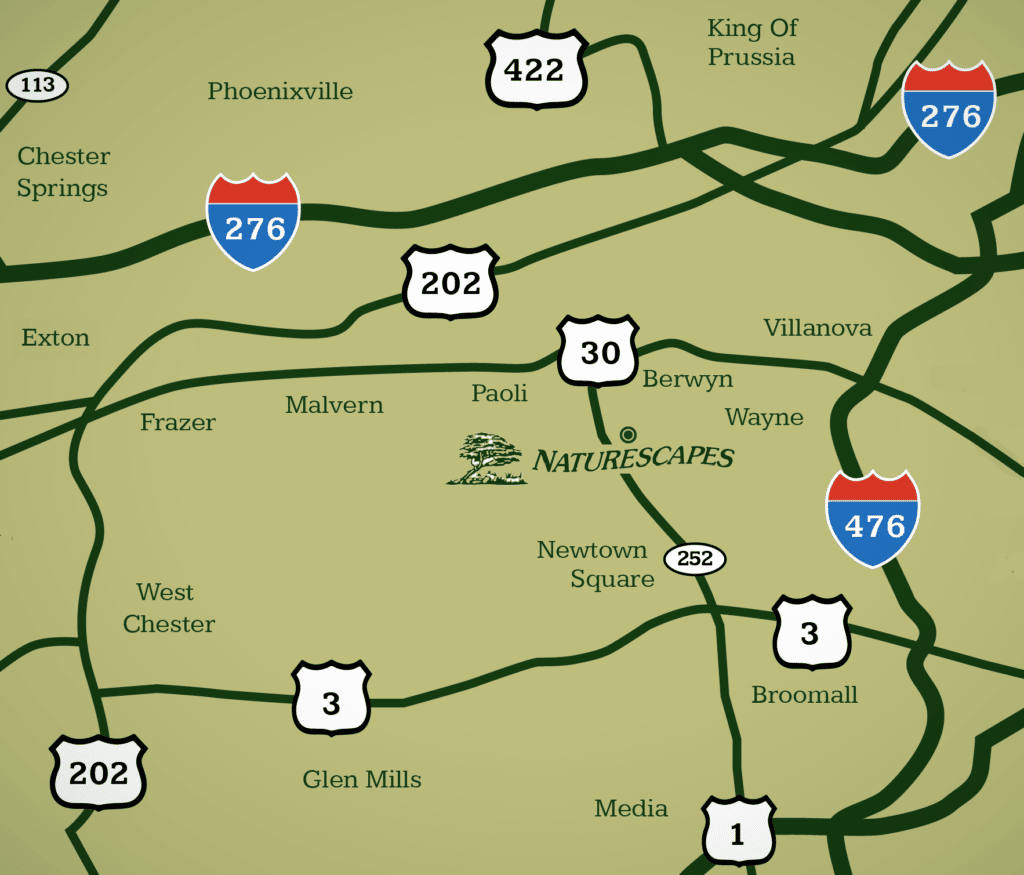
At Naturescapes, we’ve always believed that working with nature, rather than against it, is the key to beautiful, functional outdoor spaces. And when it comes to water mitigation and drainage, that belief couldn’t be more true.
Whether you’re transitioning away from a high-maintenance lawn or already enjoying a landscape full of native plants and wild beauty, here are some of our favorite water-wise strategies to help your yard thrive even after a storm.
Start With the Soil (Because It’s Where Everything Starts)
Healthy soil is like a sponge. It holds water during dry periods and lets excess moisture filter through naturally. But in many suburban yards, the soil has been compacted under machinery or buried beneath sod, which creates runoff and puddling instead.
One of the first things we recommend is amending your soil with compost and organic matter. This boosts drainage, improves root health, and supports a thriving ecosystem underground.
Not only does this help mitigate surface water, it also creates a healthier foundation for native plants and pollinator-friendly shrubs to flourish.
Say Goodbye to Turf, Hello to Rain Gardens
We’re big fans of rain gardens, and for good reason. These shallow, planted basins are designed to catch stormwater runoff and let it slowly soak into the ground. Filled with deep-rooted native plants like Echinacea, Joe Pye weed, and switchgrass, rain gardens are:
- Beautiful
- Low-maintenance
- Fantastic for pollinators
- Highly effective for drainage
Instead of trying to force water off your property, rain gardens welcome it by filtering out pollutants and supporting wildlife in the process.
They’re especially useful near downspouts, driveways, or low-lying areas of your yard where water tends to collect.
Rethink Your Lawn (or Skip It Altogether)
Traditional lawns don’t absorb water well, especially during heavy rain. Their shallow root systems and compacted soil often send water rushing across the surface, right into streets, storm drains, or basements.
A natural landscape has many benefits. Replacing even part of your lawn with native groundcovers, meadow plantings, or gravel pathways can make a big difference in how your landscape handles moisture. These alternatives are more absorbent, more biodiverse, and much easier to maintain.
You don’t have to convert everything overnight! Start with a corner of your yard and see how the birds and bees respond. (Spoiler: They’ll love it.)
Dry Creek Beds: Where Beauty Meets Function
Another favorite of ours is the dry creek bed. A simple but effective way to direct water across your property without relying on pipes or heavy infrastructure.
By creating a gentle channel lined with river rock (like we did with the client in the pictures below) and native grasses, you can turn a water problem into a design feature. Creek beds slow down the flow of water, reduce erosion, and look completely natural in any setting.
They’re especially useful along slopes, at the base of hills, or wherever water tends to rush after storms.
A Few More Water-Smart Ideas
- Downspout extensions that lead to a garden or gravel basin (like the pictures above)
- Permeable pathways that let water pass through instead of running off
- Strategic grading to gently guide water away from structures
- Planting in swales, or shallow ditches, to hold water temporarily during storms
Let Nature Do the Heavy Lifting
We believe that when landscapes work in harmony with their environment, they become more resilient, more beautiful, and more enjoyable year-round. Drainage doesn’t have to mean gutters and grates; it can mean wildflowers, butterflies, and the peaceful sound of rain soaking into the earth.
If you’re ready to get rid of the soggy lawn and build a landscape that’s better for you, your plants, and the planet, we’d love to help. Schedule your landscape design today!


